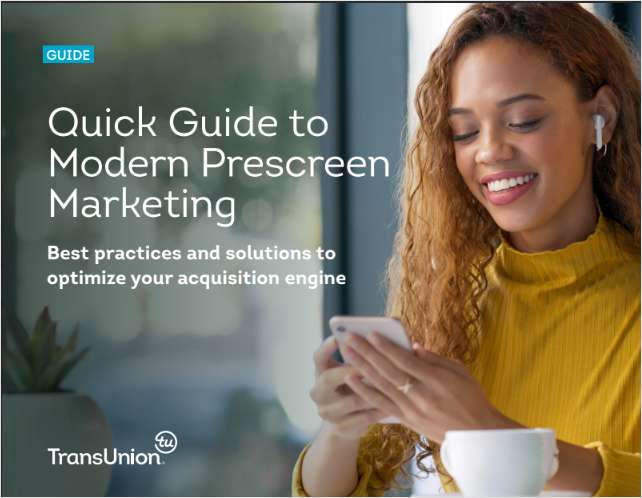WEST PALM BEACH, Fla. - As more credit unions swap suits for a shirt and a pair of Dockers, will business casual attire become the new standard? According to experts it depends on many factors ranging from the credit union's culture to the employee and member demographics.According to a Society for Human Resource Management White Paper entitled Business Casual 101, one of the biggest mistakes human resource departments can make is assuming everyone will view business casual as a perk. Experts say underestimating the impact of dress down policies can potentially throw employees into chaos. Opponents of "dressing down" say casual dress translates into a more lax approach and attitude at work. Bay Federal Credit Union Marketing Executive Vice President Jim Boyle disagrees. "We did extensive survey work and found that for us at least it was not in conflict with a certain level of professionalism," said Boyle. Fort Belvoir Federal Credit Union Vice President of Marketing and Business Development Jacqueline Connor agrees. "We made the switch three years ago to build morale and make the environment more employee friendly," said Connor. "In our case our employees were the ones who initially asked for it so they love it. And I think members can feel that enthusiasm when they walk in." According to Connor some staffers still dress in more formal business attire and the greatest challenge of the switch was clarifying what is acceptable. "We have a pretty specific dress code and we've delineated that so that if someone is not dressed appropriately we do send them home to change. It is rare but it can happen from time to time," said Connor. "Business casual isn't for every credit union. I think you need to look at your membership closely. We serve the military so a lot of our members come in their fatigues, and so it is less of a shock for them if our employees are casual." At Mountain America Credit Union, the employee dress code is quite flexible with department managers determining the appropriate dress standard based on the requirements of the job and whether there is contact with members or the public in general. Branches have a set dress code with is a "relaxed" version of typical dress attire. "We strive for a professional look, yet don't insist branch employees wear business suits each day. For men, dress shirts and slacks are acceptable, women have the choice of slacks, skirts or dresses," said MACU Vice President Training/Development Suzanne Oliver. "We also have Mountain America casual attire for Fridays which consists of a logo casual shirt, provided by the credit union, along with Dockers or nice jeans and appropriate shoes- which means no tennis or canvas shoes." According to Oliver, MACU has approached Friday casual wear in a couple of ways over the years. Initially staffers were given a logo shirt each year. Now, $50 is allocated per employee to choose from several different types of shirts and also a fleece vest or sweaters. If the employee chooses to "spend" more than the $50, they can pay the difference themselves. Oliver says employee feedback is invaluable and has led to other changes such as having separate men and women styles and switching from a typical polo shirt to long sleeve collared shirts. Ordering is done online through the credit union's Intranet site and is managed by the HR department. For North Island Financial Credit Union, work attire is just another golden opportunity to reinforce its brand. Since August 2000 NIFCU staffers have been sporting custom "island" uniforms to support the credit union's branded image in the community. Initially the shirts were paired with shorts or capris, however over the years that has been "tweaked," and now staffers must wear pants or skirts. Currently employees have the option of four-color versions of the shirt. NIFCU provides each employee with four shirts and a long sleeve cardigan on an annual basis with a budget of $200 per front line employee. "It comes to about $30,000 of our marketing budget, which is the equivalent of running about 10 newspaper ads," said NIFCU Executive Vice President Member Relations Geri Dillingham. "It is part of our image, and we wanted members to be able to instantly identify who is able to serve them when they walk into our branches. It is working, our employees are instantly recognized in the community so it is well worth it." Dillingham says over the years the employee reaction has been mixed. "We've had some who love it since it eliminates the `what should I wear' decision and others who miss being in business attire," said Dillingham. "Interestingly enough it is the younger recent college graduates who are disappointed because they were looking forward to wearing the business suit. We understand but explain that the shirt supports the brand." According to Dillingham, credit unions looking into providing uniforms should make sure it not only reflects the credit union brand but also makes a significant enough visual impact. "It can't just be a casual dress because if you just go by employee opinion they may choose style or something subtle over the most effective uniform," said Dillingham. "The bottom line is you will never get a design everyone likes so you should have lots of fun with it to create an environment that supports it." Dillingham says before initiating a "uniform" there is a checklist of other considerations such as how the shirts will be maintained, does the vendor provide a wide range of sizes, does the style cover a broad range of personalities and physical shapes, how often will the items need to be replaced and how much input will employees have. Whether formal or informal, experts say the worst thing a credit union can do about dress is leave it ambiguous. [email protected]
Complete your profile to continue reading and get FREE access to CUTimes.com, part of your ALM digital membership.
Your access to unlimited CUTimes.com content isn’t changing.
Once you are an ALM digital member, you’ll receive:
- Breaking credit union news and analysis, on-site and via our newsletters and custom alerts
- Weekly Shared Accounts podcast featuring exclusive interviews with industry leaders
- Educational webcasts, white papers, and ebooks from industry thought leaders
- Critical coverage of the commercial real estate and financial advisory markets on our other ALM sites, GlobeSt.com and ThinkAdvisor.com
Already have an account? Sign In Now
© 2024 ALM Global, LLC, All Rights Reserved. Request academic re-use from www.copyright.com. All other uses, submit a request to [email protected]. For more information visit Asset & Logo Licensing.








